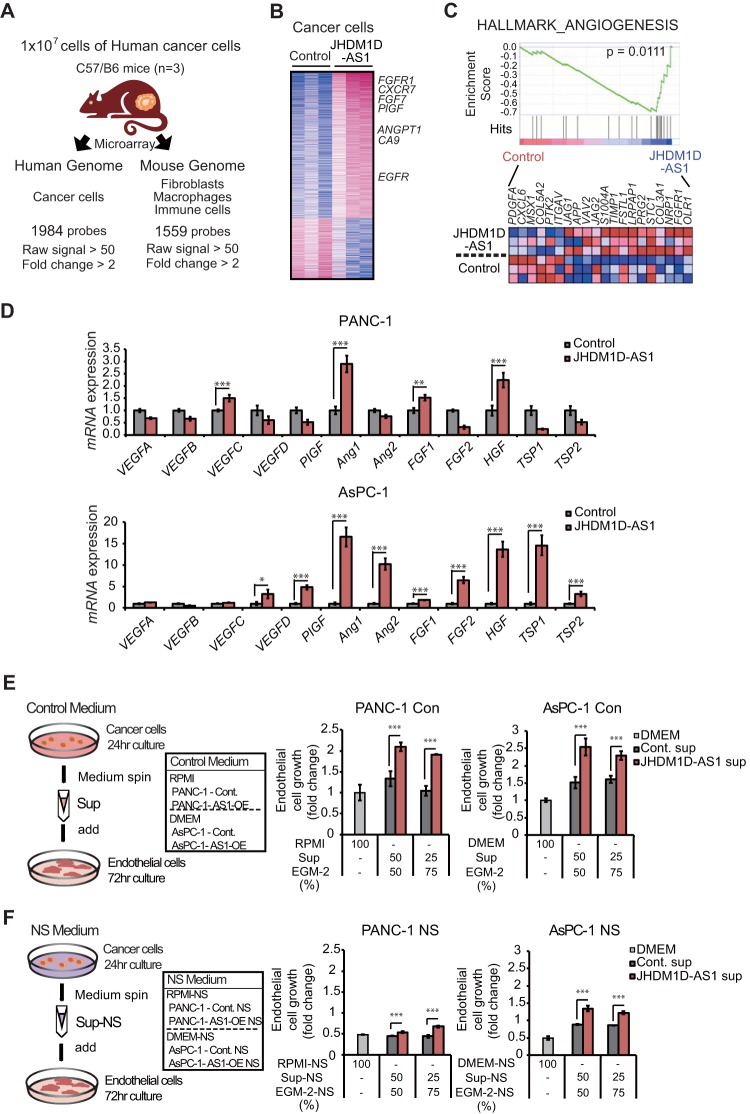FIG 5.
JHDM1D-AS1 overexpression increases the expression of genes for angiogenic factors such as HGF1 and FGF1 in cancer cells. (A) Schematic representation of microarray analysis. Expression of mRNA derived from cancer cells and stroma cells was separately examined by using human genome U133 plus 2.0 arrays and mouse genome 430 2.0 arrays, respectively. (B) Heat map representation of 1,983 human cancer cell-derived genes that were up- or downregulated by more than 2-fold in vivo in tumor tissues derived from JHDM1D-AS1-overexpressing AsPC-1 cells. (C) Angiogenesis-related genes are upregulated in tumor tissues derived from HDM1D-AS1-overexpressing AsPC-1 cells, as determined by GSEA analysis. (D) Expression of major proangiogenic and antiangiogenic factors in tumor tissues derived from JHDM1D-AS1-expressing PANC-1 and AsPC-1 cells. mRNA expression of proangiogenic and antiangiogenic factors was measured in PANC-1 and AsPC-1 cells by quantitative real-time PCR analysis. (E) Tumor supernatant from JHDM1D-AS1-overexpressing PANC-1 and AsPC-1 cells under the control condition induced endothelial cell growth. The proliferation of human umbilical vein endothelial cells (HUVECs) was measured with a mixture of EGM-2 and either RPMI (for PANC-1 cells) or DMEM (for AsPC-1 cells) culture supernatants. (F) Tumor supernatant from JHDM1D-AS1-overexpressing PANC-1 and AsPC-1 cells under the nutrient-starved condition induced endothelial cell growth. The proliferation of HUVECs was measured with a mixture of EGM-2 and either RPMI-NS (from PANC-1 cells) or DMEM-NS (from AsPC-1 cells) culture supernatants. Data are presented as the mean ± SEM for at least three independent experiments. The expression of each transcript is reported relative to that of β-actin and was determined by real-time qPCR analysis. Student's t tests were performed for the indicated comparisons (***, P < 0.005).

